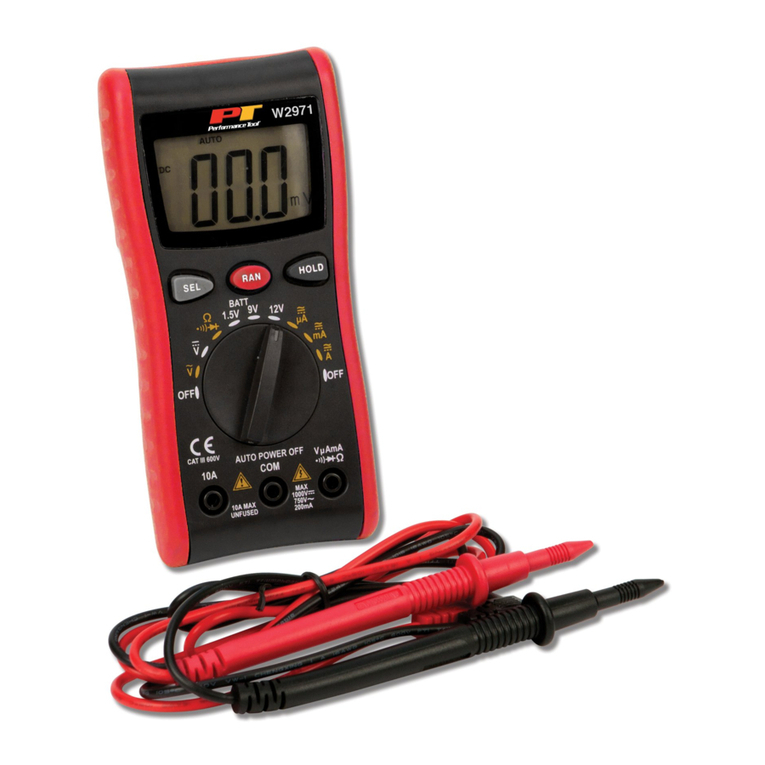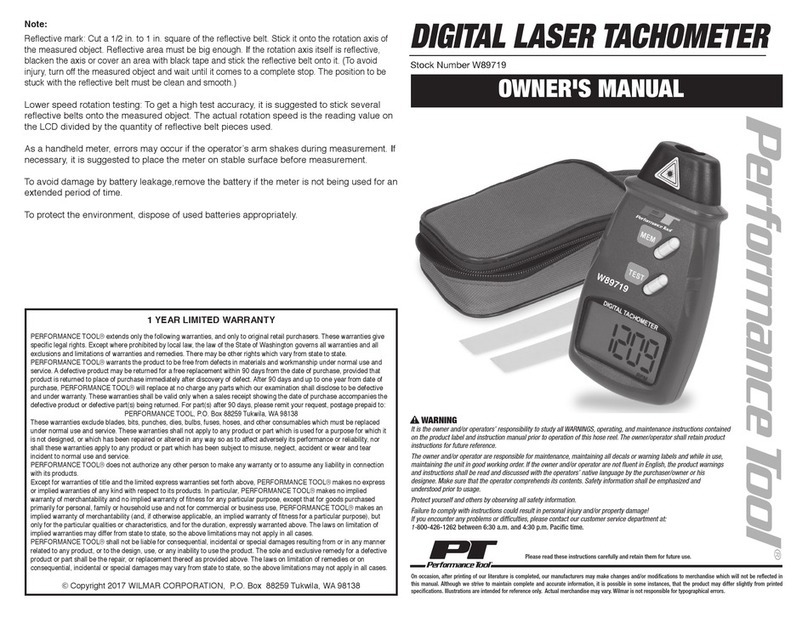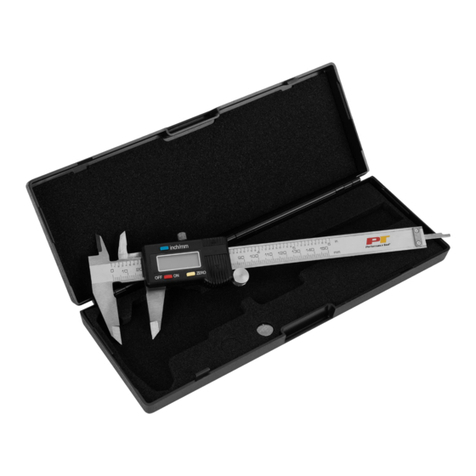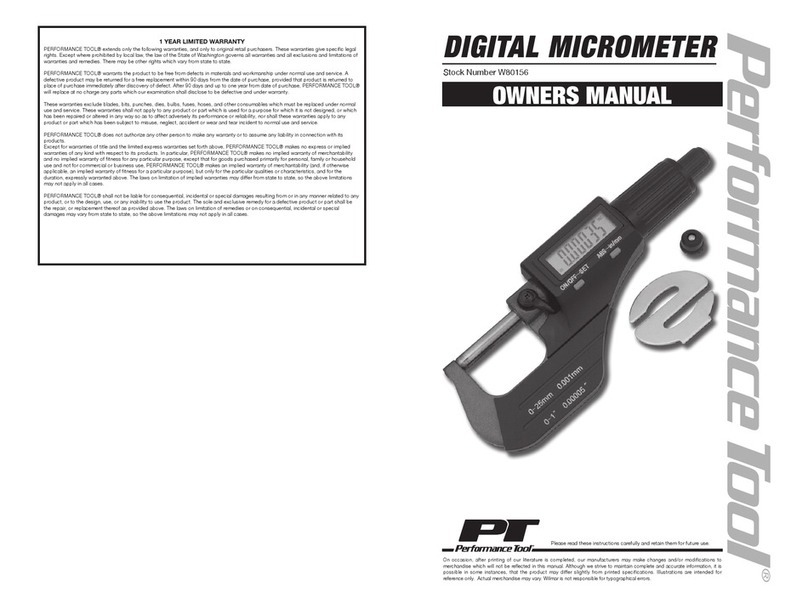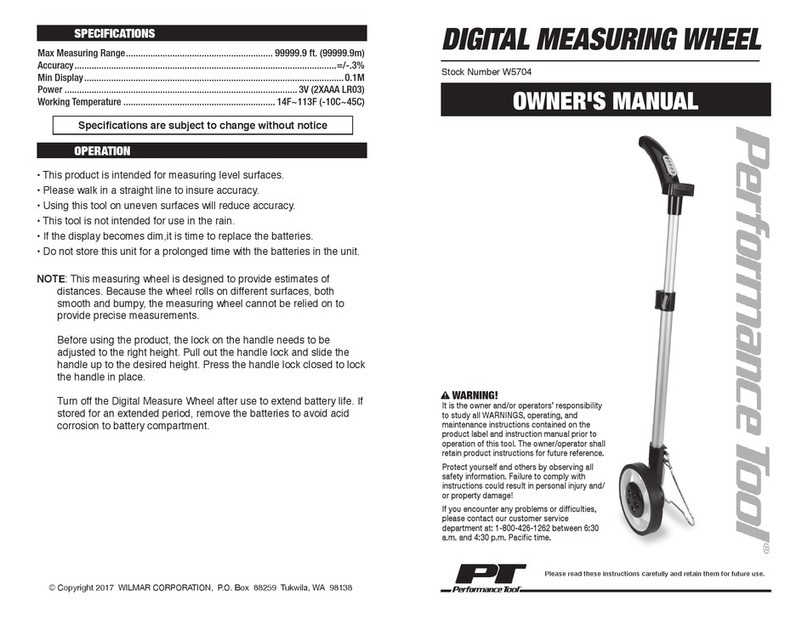12 VOLT DIGITAL BATTERY
ANALYZER
OWNER'S MANUAL
Stock Number W2998
FOR YOUR SAFETY,
please read these instructions carefully and retain them for future use.
LIMITED WARRANTY
PERFORMANCE TOOL extends only the following warranties, and only to original retail purchasers.
These warranties give specific legal rights. Except where prohibited by local law, the law of the State
of Washington governs all warranties and all exclusions and limitations of warranties and remedies.
There may be other rights which vary from state to state.
PERFORMANCE TOOL warrants the product to be free from defects in materials and workmanship
under normal use and service. A defective product may be returned for a free replacement within 90
days from the date of purchase, provided that product is returned to place of purchase immediately
after discovery of defect. After 90 days and up to 1 year from date of purchase, PERFORMANCE
TOOL will replace at no charge any parts which our examination shall disclose to be defective
and under warranty. These warranties shall be valid only when a sales receipt showing the date of
purchase accompanies the defective product or defective part(s) being returned. For part(s) after
90 days, please remit your request, postage prepaid to: PERFORMANCE TOOL, P.O. Box 24086
Seattle, WA 98124
These warranties exclude blades, bits, punches, dies, bulbs, fuses, and other consumables which
must be replaced under normal use and service. These warranties shall not apply to any product or
part which is used for a purpose for which it is not designed, or which has been repaired or altered
in any way so as to affect adversely its performance or reliability, nor shall these warranties apply to
any product or part which has been subject to misuse, neglect, accident or wear and tear incident to
normal use and service.
PERFORMANCE TOOL does not authorize any other person to make any warranty or to assume
any liability in connection with its products.
Except for warranties of title and the limited express warranties set forth above, PERFORMANCE
TOOL makes no express or implied warranties of any kind with respect to its products. In particular,
PERFORMANCE TOOL makes no implied warranty of merchantability and no implied warranty of
fitness for any particular purpose, except that for goods purchased primarily for personal, family
or household use and not for commercial or business use, PERFORMANCE TOOL makes an
implied warranty of merchantability (and, if otherwise applicable, an implied warranty of fitness for
a particular purpose), but only for the particular qualities or characteristics, and for the duration,
expressly warranted above. The laws on limitation of implied warranties may differ from state to
state, so the above limitations may not apply in all cases.
PERFORMANCE TOOL shall not be liable for consequential, incidental or special damages
resulting from or in any manner related to any product, or to the design, use, or any inability to use
the product. The sole and exclusive remedy for a defective product or part shall be the repair, or
replacement thereof as provided above. The laws on limitation of remedies or on consequential,
incidental or special damages may vary from state to state, so the above limitations may not apply in
all cases.
Copyright © 2017 PERFORMANCE TOOL – All rights reserved
